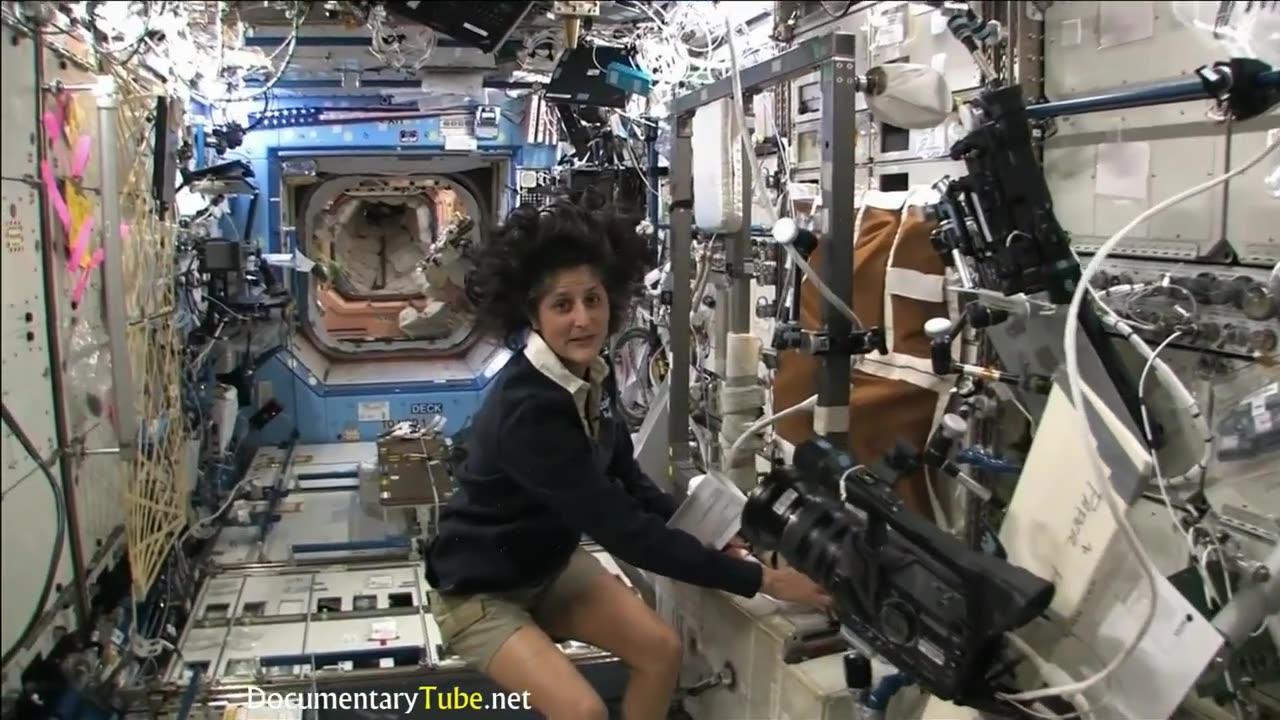Premium Only Content

HOW IT WORK: The International Space Station
HOW IT WORK: The International Space Station
The International Space Station (ISS) is a remarkable and intricate feat of human engineering and international cooperation, serving as a symbol of humanity's quest for exploration and scientific discovery beyond Earth's boundaries. This sophisticated structure represents a remarkable collaboration between multiple space agencies, primarily NASA (United States), Roscosmos (Russia), ESA (European Space Agency), JAXA (Japan Aerospace Exploration Agency), and CSA (Canadian Space Agency).
The ISS orbits Earth at an average altitude of approximately 400 kilometers (about 250 miles), traveling at a speed of about 28,000 kilometers per hour (17,500 miles per hour). It serves as both a laboratory and a living quarters for astronauts and cosmonauts from around the world, conducting scientific research and experiments that provide insights into various fields, including physics, biology, astronomy, and materials science.
Key features and components of the ISS:
1. **Modules and Components:** The ISS is composed of multiple interconnected modules, each serving specific functions. These modules include living quarters, laboratories, storage areas, and docking ports for spacecraft.
2. **Microgravity Research:** One of the most important aspects of the ISS is its role in conducting experiments in a microgravity environment. Researchers can study phenomena that are not possible to replicate on Earth, leading to discoveries that have practical applications on our planet.
3. **International Cooperation:** The ISS embodies the spirit of international cooperation, with participating countries sharing resources, knowledge, and expertise to build and maintain the station. Crew members from different nations work together seamlessly, conducting joint experiments and collaborative research.
4. **Astronaut Accommodations:** The living quarters of the ISS are equipped with sleeping quarters, hygiene facilities, exercise equipment, and a galley for preparing food. These facilities are designed to support the physical and mental well-being of crew members during their stay in space.
5. **Science Laboratories:** The ISS hosts a variety of scientific laboratories, including the U.S. Destiny Laboratory, the European Columbus Laboratory, and the Japanese Kibo Laboratory. These labs provide controlled environments for a wide range of experiments.
6. **Spacewalks (Extravehicular Activities or EVAs):** Astronauts regularly perform spacewalks to maintain and repair the ISS, as well as to install new equipment and conduct experiments. These activities require specialized training and equipment to ensure the safety of the crew members.
7. **Communication and Tracking:** The ISS maintains constant communication with ground control centers on Earth, allowing for real-time monitoring of the station's systems and crew well-being. The crew can also communicate with their families and conduct educational outreach activities with students and the public.
8. **Technological Advancements:** The development and operation of the ISS have led to numerous technological advancements, such as improvements in life support systems, water recycling, solar power generation, and materials science.
In summary, the International Space Station is a remarkable example of international collaboration, scientific exploration, and technological innovation. It represents humanity's ongoing efforts to expand our understanding of the universe and our ability to live and work in space, paving the way for future missions to more distant destinations in our solar system and beyond.
-
 1:40:14
1:40:14
TheConnieBryanShow
3 days agoGAIN OF FUNCTION: MRNA, D.A.R.P.A. & THE PFIZER PAPERS
531 -
 2:14:01
2:14:01
Fresh and Fit
4 hours agoDr. Disrespect Moves To Rumble!
35.5K20 -
 6:14:53
6:14:53
Akademiks
7 hours agoDrake Sued his Label for Botting Kendrick Lamar Streams to 'End Him'. Kendrick Drops new video!
36.2K10 -
 0:46
0:46
Dr Disrespect
12 hours agoIt's not just a stream... it's an experience
306K1.66K -
 5:45:38
5:45:38
80sKiid
7 hours ago $22.43 earnedFirst stream on RUMBLE!!!!!
84K5 -
 3:56:31
3:56:31
JakeParker
7 hours ago $13.61 earnedJakeParker is LIVE on Rumble
47.3K -

SpartakusLIVE
9 hours ago $23.77 earnedThe Duke rallies squad for LAUGHS into the night with a SMATTERING of TOXIC banter
74.4K17 -
 1:03:51
1:03:51
Flyover Conservatives
1 day agoGeneration Z’s Revolution: 17 Year Old Author on the Return of Faith, Family, and the End of Feminism - Hannah Faulkner; Economic Update - Dr. Kirk Elliott | FOC Show
40.1K2 -
 1:12:43
1:12:43
Adam Does Movies
11 hours ago $20.01 earnedMoviegoers Are Singing Now! + Lilo & Stitch + Sonic 3 - LIVE!
76.7K7 -
 1:26:05
1:26:05
Donald Trump Jr.
14 hours agoRegime Media Imploding: What’s Next for MSNBC? Plus Michael Knowles & Alex Marlow | TRIGGERED Ep.194
227K213